You’re pulling in your garden harvest…it’s covering every surface of your home…and now you’re left with the familiar problem of “what are you supposed to do with all of this fresh produce?”.
Most of us have not been blessed with a traditional root cellar in our home. If you happen to be someone with a root cellar, I would just like to say that I am exceedingly jealous.
Fortunately, for the rest of us without a root cellar, I’ve got some good news: there are still plenty of ways to store our crops for later.
Christian and I have been contemplating putting in a root cellar for a while now. We have been seeing more of a need for one as our food growth continues to increase. Back in the beginning, I didn’t think a root cellar was necessary; I was still trying to figure out how to grow vegetables and we had smaller quantities to deal with.
Now we are in our homesteading groove (most of the time), but one of the big issues we continue to have as our growing capacity expands is storage.
An example is our potato storage. We have been Digging Up and Storing Potatoes for Winter for years now. In recent years, it has been huge amounts and we have had to come up with a plan to store them without your typical root cellar. Watch how I have managed to store over 200 lbs of potatoes without a root cellar.
In the past, we have used our basement for storage, but it hasn’t always worked the way we would have liked. Now, we have started exploring our options; we even had a concrete guy come over recently and talk to us about the logistics of pouring a concrete root cellar.
Since there have been a ton of questions from everyone on social media recently asking me “what do I do with all of this food?”, I thought that I would gather up a bunch of info in this post. Hopefully it helps you get your ideas flowing and helps you take that first step towards storing food for later. For a more detailed in-depth look at storing vegetables without a root cellar, you can also take a look at these 13 Alternatives to a Root Cellar.
By the way, if you prefer listening to podcasts over reading info, I recently made a podcast episode on storing vegetables without a root cellar here:
Learn More About Storing Your Vegetables Without a Root Cellar
I have been reading books recently in order to do some root cellar research. So I thought that I would give you a book recommendation (and please know that I am really picky about the books I buy and recommend).
I think that this book that I recently purchased is a good investment and I am so glad I bought it. It is called Root Cellaring: Natural Cold Storage of Fruits and Vegetables, by Mike and Nancy Bubel. This is a really good book with a very common-sense title, diagrams, charts, and also discusses about how to build a root cellar. It also talks about how to create makeshift root cellar options and it gives a lot of information on storing vegetables without a root cellar.
The book explains how vegetables will handle different types of storage and what their requirements are. It’s really good, so grab a copy and start learning about root cellaring. In this post, I would like to share a few things that I have learned from the book but also some things that I have learned through trial and error over the years.
How to Store Vegetables Without A Root Cellar
The big thing you need to remember if you are storing vegetables is that not all vegetables are great options for a root cellar or long-term storage. Things like cucumbers, tomatoes, or green beans are what you focus on either freezing, fermenting, or canning.
Root crops like potatoes, beets, parsnips, and carrots are fantastic for root cellars or cold storage. You can grow a lot of those things and keep them for many months if you play your cards right.
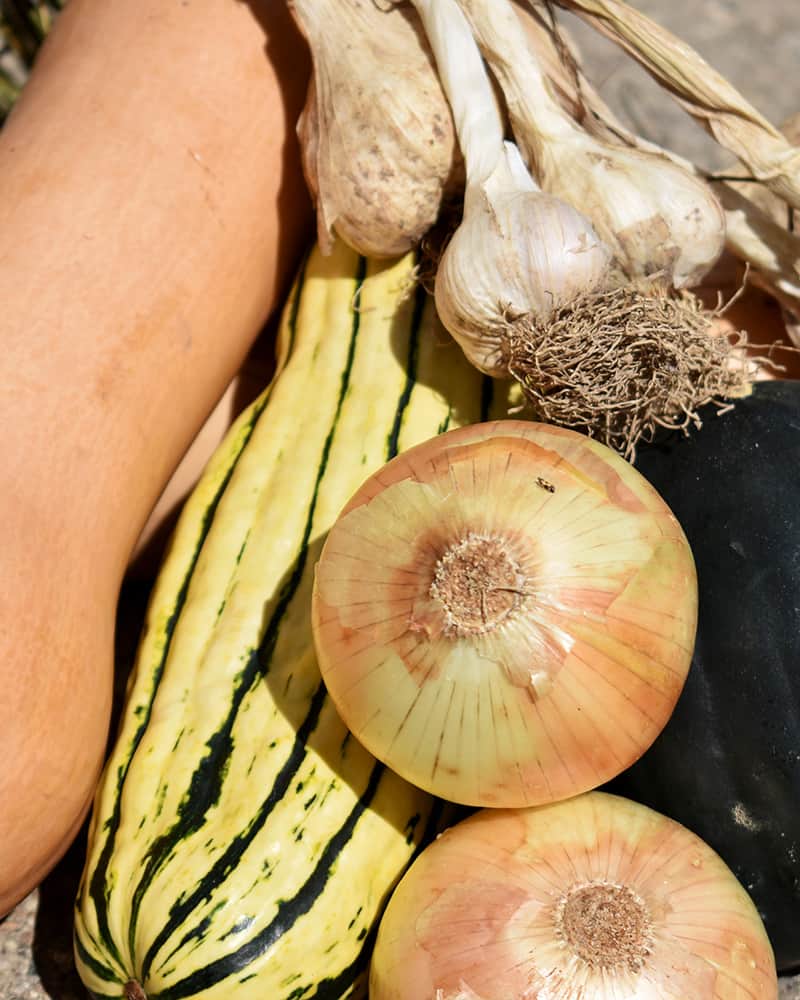
Vegetables That Thrive in Root Cellar Storage Include:
- Carrots
- Beets
- Potatoes
- Sweet Potatoes
- Parsnips
- Onions
- Garlic
- Winter Squash
- Pumpkins
- Cabbages
Note: Keep in mind that each type of vegetable has its own set of instructions for pre-storage preparation and for how best to store them long-term.
Creating a Root Cellar Environment
When trying to create a root cellar environment or mimic a root cellar, it needs to be cold, dark, and humid. A lot of these vegetables have specifics about how they should be stored, but the thing to remember as a beginner is: the colder the better. However, you don’t want things to get so cold they freeze. If things freeze and then thaw out, they tend to get mushy; you want your temperature to be right above 32 degrees Fahrenheit with some humidity if possible.
I have learned that when vegetables are pulled from the garden, they are still alive for a time. As they age, they start to lose some of their moisture. Having a humid environment slows that moisture loss and helps keep them fresher longer. Ideally, 32ish plus degrees Fahrenheit with some humidity and darkness is ideal, however, you can get away with something that isn’t exactly that.
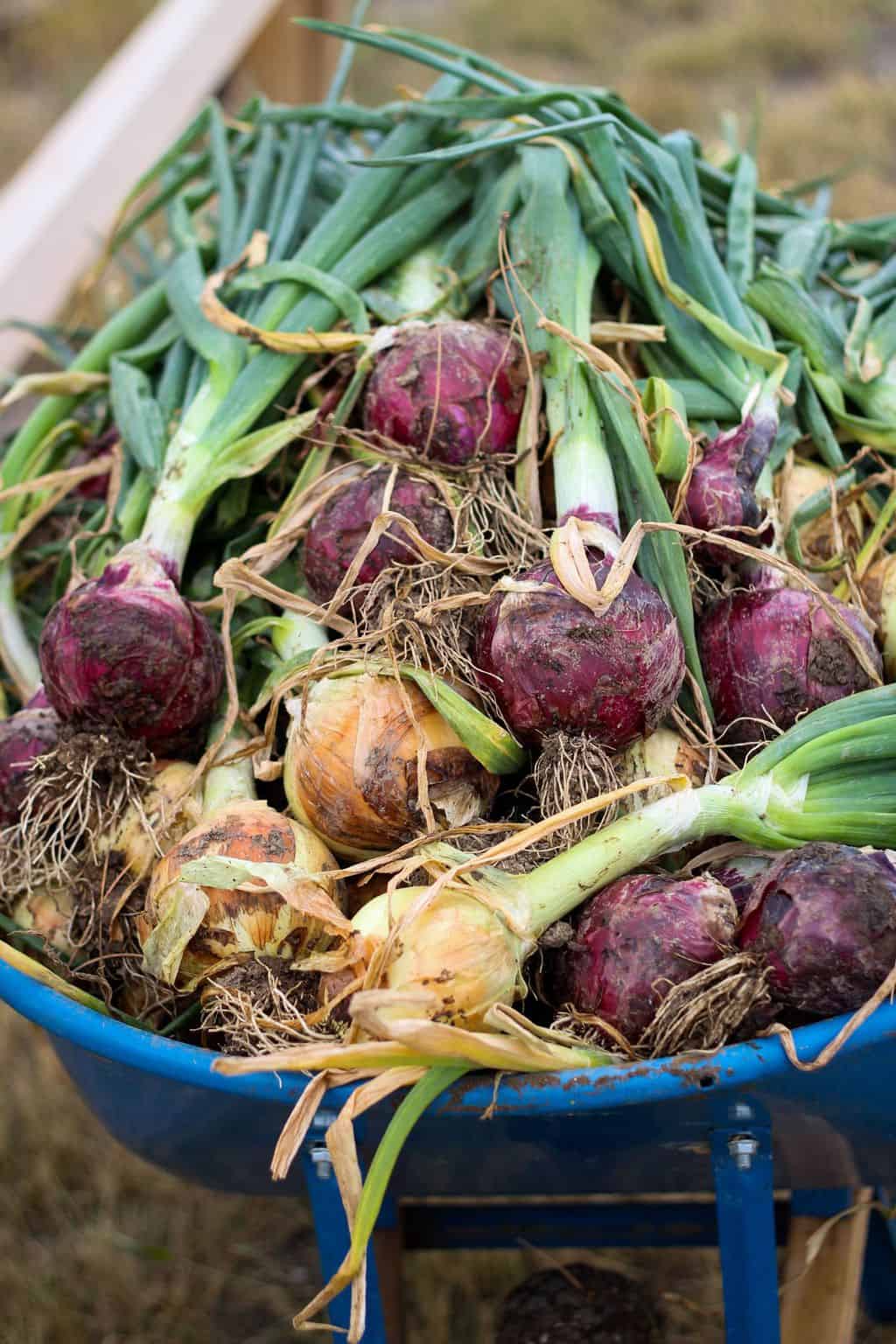
Creating A Root Cellar Environment for Potato and Onion Storage:
One thing to remember when storing vegetables like onions or especially potatoes they need to have some air circulation. You don’t want to take your potatoes stick them in a rubber-made plastic box with the lid clamped down and leave it. Some of your vegetables will rot and mold quickly without the proper air exchange.
What I do for storing my potatoes is putting them in cardboard boxes, place a layer of newspaper between each row of potatoes and then completely close the cardboard box. The box then gets put in a part of our basement that is super dark. One issue with things like potatoes is that if they get exposed to light, they begin to sprout and honestly, I still have sprouting potatoes even when I try to keep it as dark as possible. I don’t think our basement is quite as cold as I would like it to be but even though it’s moderately cool it still works.
This is also a good place to hang onion braids, you don’t have to braid your onions but it’s kind of a fun thing and it allows air circulation. If you would like to braid your onions to hang for storage, I would love to help you learn How to Braid Your Onions.
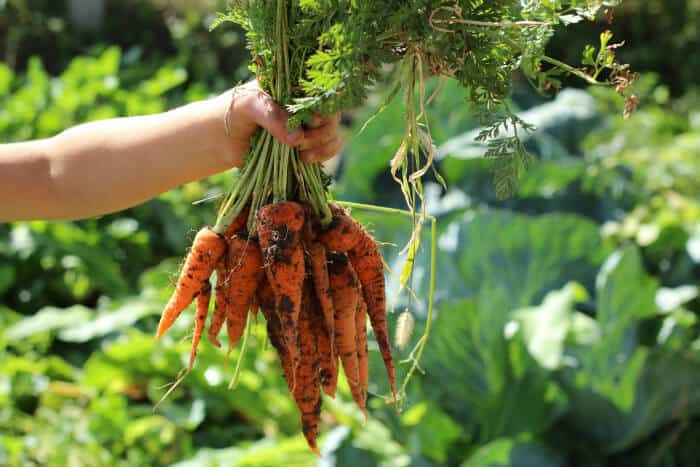
Creating A Root Cellar Environment for Carrot Storage:
Due to the many carrot disasters I have had in the past when I have tried to store carrots, I don’t feel qualified to give advice on carrot storage in this capacity. There are a lot of people on the Internet that say you can store your carrots in sawdust or boxes of sand, and you sprinkle them with some water, and they’ll be good.
I attempted storing carrots in the box with sand method and it was a horrible failure. It was so gross that Christian was completely traumatized and will no longer allow me to try to store carrots in any kind of box.
This method is also very heavy; you will need a dolly to move the boxes around. My carrots turned out disgusting: they were rotted carrot mush, thought it is possible that I did something wrong. I cannot personally recommend the carrots in the sand method because it did not work for me.
So I currently simply store my carrots in the fridge, which is one way of storing vegetables without a Root Cellar.

If your storage is a little bit warmer, not quite as humid, or simply less than perfect, there are still things you can do to make it work. Your situation might not work for very long storage or work as well, but any kind of storage is better than just letting everything rot. I’ve never had a root cellar, so I have always just kind of had to make it work as best that I can, and you can do that too.
3 Ways to Store Your Vegetables Without a Root Cellar
Your root crops can be from your home garden, bought at the farmers market, or extra produce that a friend gave you. No matter where they are from, here are three ways you can store them even if you don’t have an actual root cellar.
Tip #1: Leave Your Crops Planted in the Garden (Depending on Your Climate)
This first option may work if you don’t live in a place like Wyoming. If you live in a more normal climate, then you can leave certain crops in the garden until you actually need them. Carrots and parsnips are great candidates for this type of storage.
As some root vegetables mature, their tops stick up out of the ground, and if you are leaving them in the garden, then you will want to make sure that they are completely covered. If any part of the skin is exposed and it freezes, then it’s not going to be good anymore. You will want to cover your vegetables with a HEAVY layer of mulch (approx. 18 inches thick is a good idea if you can make that work) in this situation.
You can cover your vegetables using straw, grass clippings, or, some people cover their rows with a tarp. If we were to use a tarp, we would have to anchor it down with concrete blocks because of the wind we get in the winter. If you don’t have as much wind or you do not get as much snow as Wyoming does, you can scrape away the straw mulch or move your tarp to harvest as needed.
I do use this method to a certain extent: I will leave my carrots in the ground until October or November but beyond that, it doesn’t work for me. The ground here freezes solid and then it’s impossible to get the carrots out. Another problem that happens is snowdrifts end up right on top of the carrot bed and then I would be left digging through 3-foot snow drifts to get to the carrots.
This may not work for me and my climate, but folks in a little bit more temperate climate have been storing root crops like this with great results. If this first storage trick is something that interests you, do a little research, talk to other gardeners in your area (or your local extension office), and find some information that will let you know if this is something that will work for your harvest.
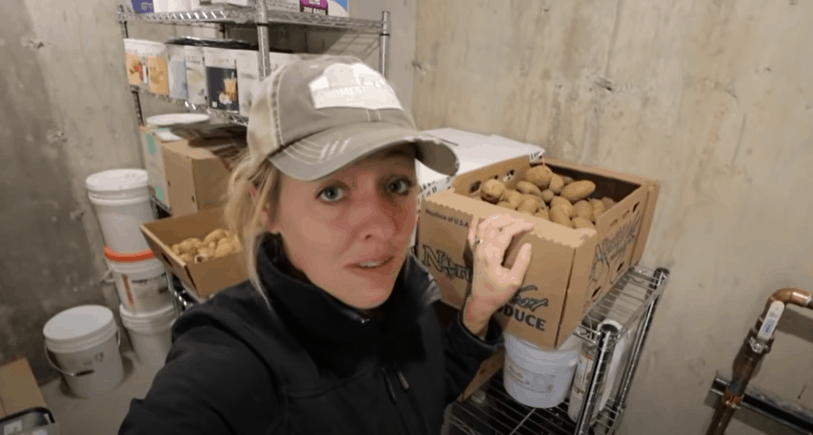
Tip #2 Use an Unheated Room to Store Your Vegetables
The second tip is to use an unheated room in your house, garage, or another building. When I talk to other homesteaders, this is the one option that everyone uses the most. This method of storage is one that I have done for many years, we have a basement that is not completely unheated but cooler than the rest of the house. There is an old unfinished part of our basement where I have stored my potatoes, carrots, and onions in the past.
If you have an old farmhouse-type house with a room that is not very well heated and super drafty, this might be a great room to store crops. I have also heard of people using an attic or crawl space to store their food (although one thing about the crawl space that would be worrisome is rodents and pests).
An alternative to a basement might be a garage or outbuilding that is unheated but also is not going to freeze. If you’re going to use a building like this, perhaps you can use extra insulation around your storage container to make sure that it’s protected. It really is about being creative and finding ways to make your situation work.
In your unheated room, if you can afford it, you can also build an actual cold storage room; there are some pretty cool tutorials out there where people will frame off a corner of their unheated basements and make it into an actual root cellar.
We looked at this idea quite a bit and the reason we didn’t use this method is that we could not see a way to add a vent to our basement. Having a vent to the outside that provides air circulation is a really important part of a root cellar.
As a vegetable ripens, it gives off ethylene gas, and ethylene gas causes the other vegetables around to spoil more quickly. This gas is one of the reasons why you will see vents in an old root cellar. If we could have figured out a way to vent our basement and build a cold room, I absolutely would have done this.
This idea of adding a root cellar or cold storage room is just another option to consider; first I would recommend doing a search on building a cold storage room. If this is something that you feel is a possibility, I would consider it because it would be really cool to build from what you already have.
Tip #3 Store Root Vegetables in an Old Refrigerator
You may not have room in your regular house fridge, but it might be a wise investment to find an old fridge on Craigslist or Facebook. This fridge doesn’t have to be pretty; you can keep it in your garage, shop, or the backroom of your house.
As long as it’s not getting too cold and/or freezing the vegetables, it will be a great place to store some of your vegetables like carrots and beets. You can also put a little pan of water in there to help with the humidity. If it works well enough, you can even put your cabbage in there and your cabbage will store quite a while if you’re not wanting to make sauerkraut. An old fridge is a great option for root crop storage, and a bonus is that you can store your ferments in there as well.
If we ever build a root cellar, my goal is to be able to put my potatoes, carrots, and onions down there in baskets. There will also be shelves to store jars of sauerkraut and other fermented foods. Since I don’t have that yet, what I’ve always done with sauerkraut in the past is just store it in our shop refrigerator and it works well.
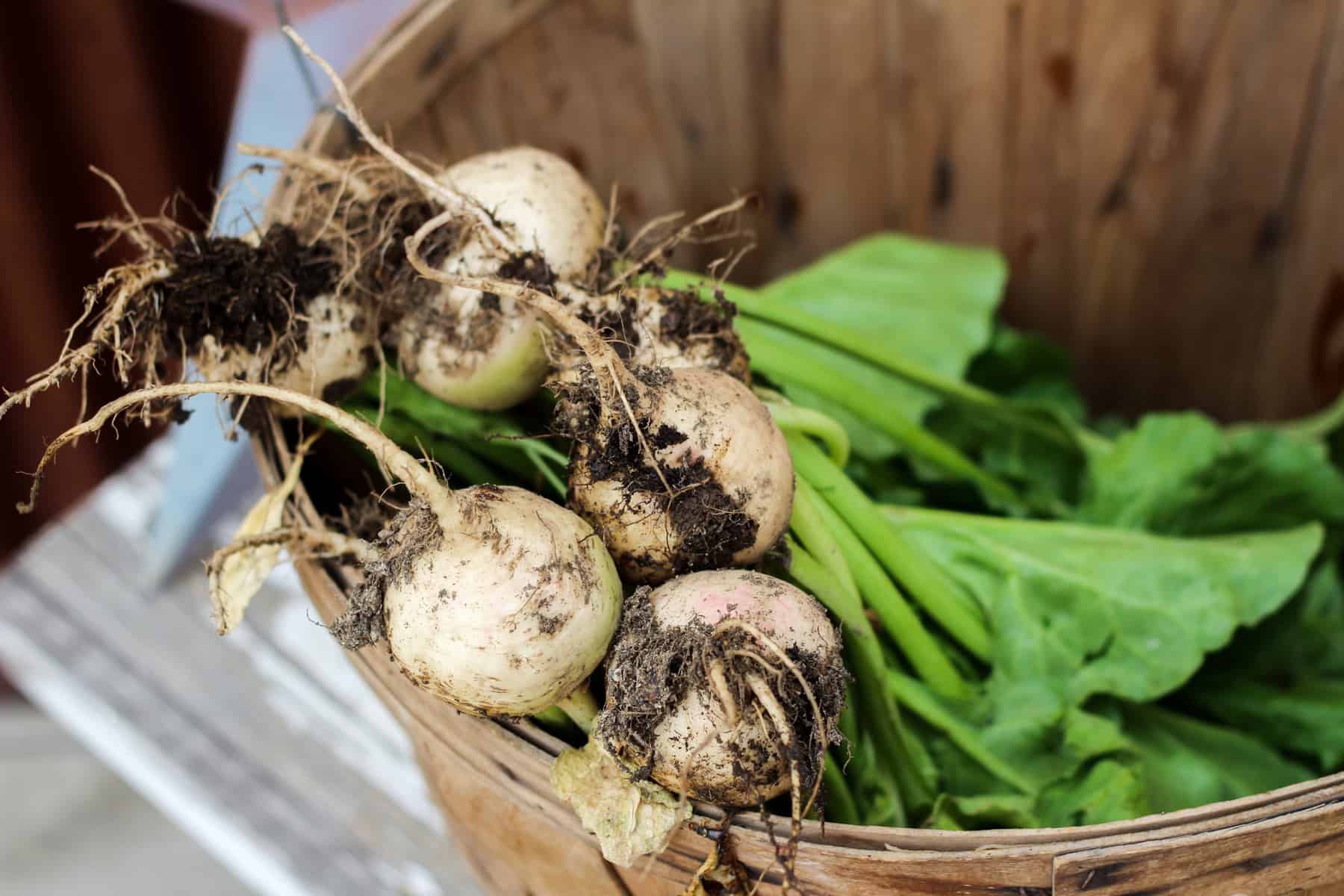
Get Creative with Your Root Cellar Storage
More ideas are coming out, such as burying things in the ground, like burying a trash can, or an old chest freezer in the ground and storing food inside. We have not tried this because I think it would have to be buried fairly deep to not freeze here in Wyoming.
In a milder climate, this could work, though I would look at a couple of different tutorials or instructions before starting to dig and bury trash cans in your backyard. I have seen ideas where people stack hay bales around a hole then put a window on top. This creates a greenhouse effect on the top and you would just need to make sure it didn’t freeze.
If you are looking for ideas there are a lot of creative ways people have been storing vegetables without a root cellar out there, you can learn more about them by reading 13 Root Cellar Alternatives. When deciding on a method, just make sure you’re following one that has good reviews and looks like it will work. It will still take some research on your part to figure out which type of cold storage you can do in your yard and climate.
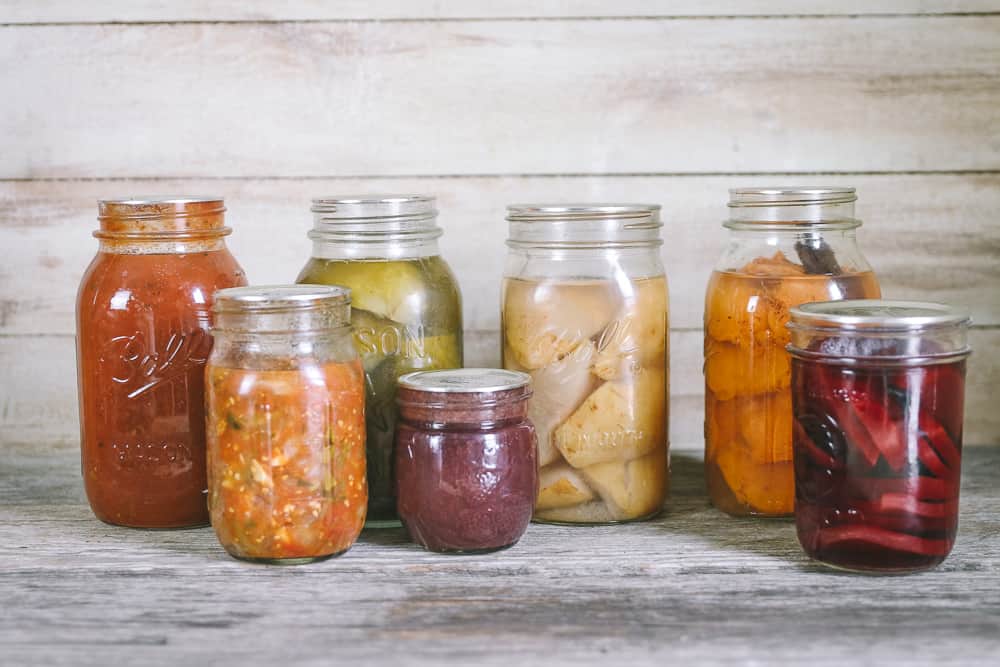
Looking For Different Food Storage Options?
I hope this post helped you get your creative juices moving. If you aren’t sure if any of these cold food storage ideas will work for you, I suggest that you start thinking outside the box, because there are many ways to squirrel away that food for later besides cold storage.
If you would like to check out some other ideas for food storage, check out my article with My Favorite Ways to Preserve Food at Home. You can also check out my Canning Made Easy System if you would like to truly create shelf-stable food; that doesn’t require any sort of special root cellar or refrigerator.
More Vegetable Storage Tips:
- How to Braid Garlic
- How to Can Food with No Special Equipment
- How to Manage Your Garden Harvest (Without Losing Your Mind)
- How to Preserve Fresh Herbs in Olive Oil
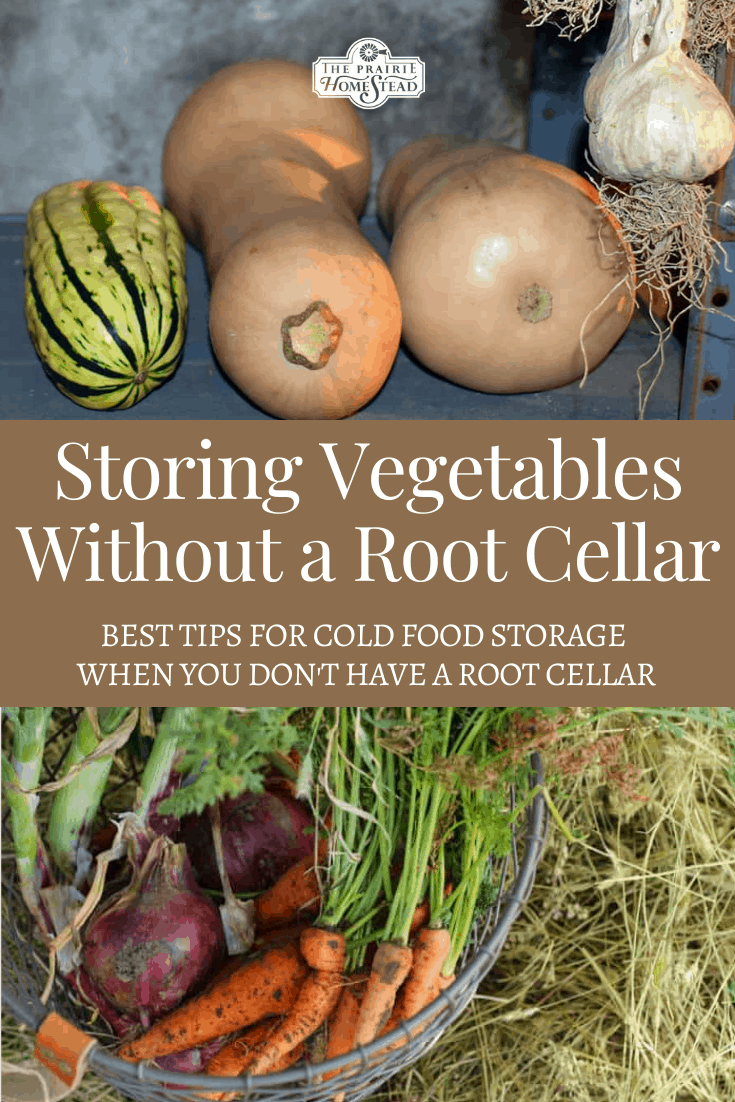
The post Top Tips For Storing Vegetables Without a Root Cellar appeared first on The Prairie Homestead.
Via Gardening http://www.rssmix.com/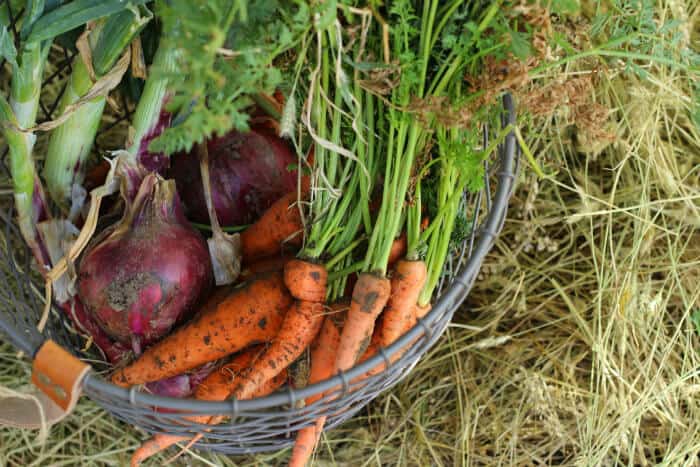
No comments:
Post a Comment